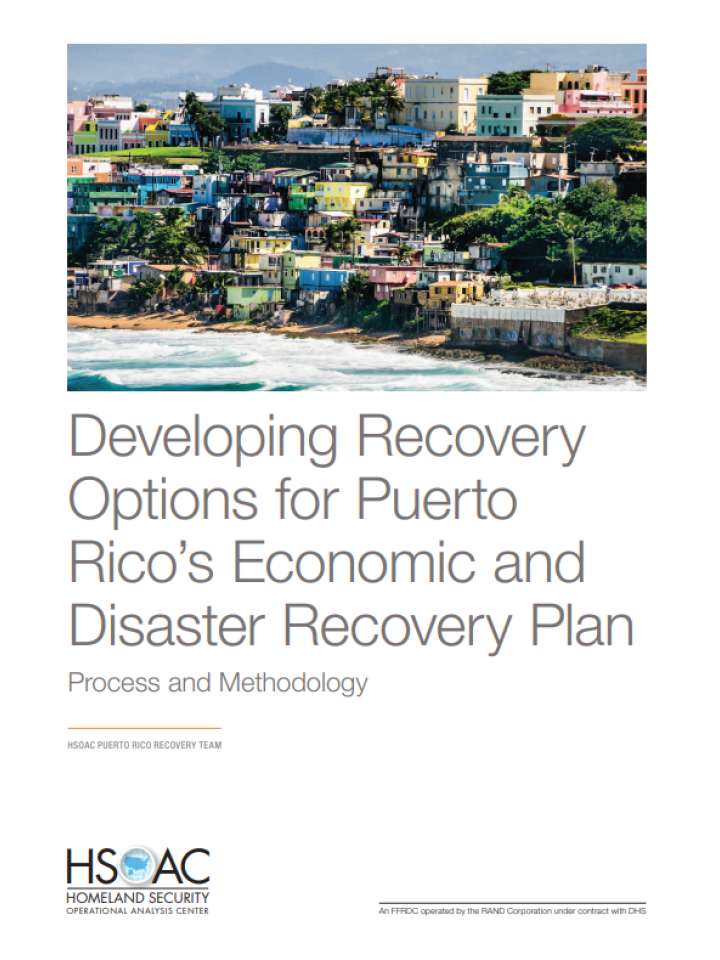Developing recovery options for Puerto Rico's economic and disaster recovery plan: Process and methodology
This report summarizes the strategic planning process in support of the government of Puerto Rico in its development of a congressionally mandated recovery plan. Nearly 300 potential recovery actions were developed that Puerto Rico could take to repair damage from Hurricanes Irma and Maria and address longer-term economic recovery needs.
It describes how the Homeland Security Operational Analysis Center (HSOAC), a federally funded research and development center, produced a detailed damage and needs assessment (DNA) report and developed an array of potential courses of action (COAs) that Puerto Rico could pursue to repair damage from the hurricanes and address longer-term economic recovery needs (Fischbach et al., 2020).
This report offers an overview of the core steps that HSOAC took to support plan development:
- First, HSOAC developed an independent DNA to document pre- and posthurricane conditions in the wake of Hurricanes Irma and Maria
- Second, as the DNA was being written, the project team documented the vision, goals, and strategic objectives of the government of Puerto Rico.
- Simultaneously, HSOAC and federal partners began developing potential COAs. This effort entailed coordination with or gathering information from RSFs, FEMA sectors, COR3 staff, municipal leaders, NGOs, and other stakeholders. The project team described the nearly 300 COAs using a common template.
- To make the range of choices more manageable for decisionmakers, HSOAC bundled these COAs into portfolios that were aligned with the strategic objectives.
- After HSOAC’s final delivery of the draft recovery plan to the government of Puerto Rico in late July, the governor’s team directed the inclusion of additional material that connected with other communications by the governor, in an effort to best align with the vision for Puerto Rico he put forth.
- The plan was signed by the governor of Puerto Rico and submitted to Congress on August 8, 2018, as required in the congressional language. On August 28, 2018, the FOMB announced that it certified the plan as submitted (FOMB, 2018).
Explore further

